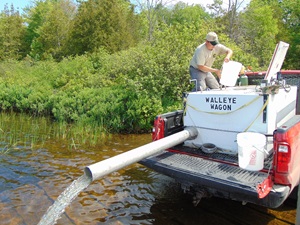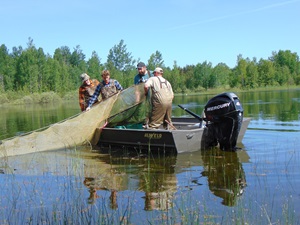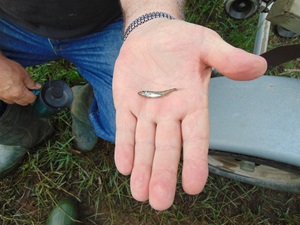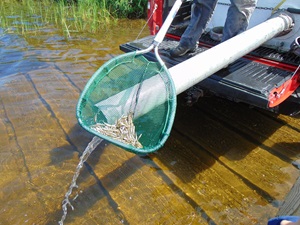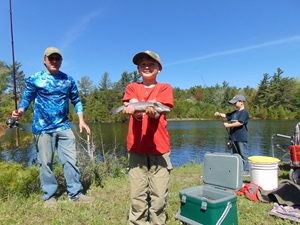906 Adventure Team’s youth bike club gearing up for a fifth summer of fun
Plenty of fish in the . . . pond? Raising over 40,000 walleye in Northern Michigan
Straits Area Sportsmen’s Club is ‘schooling’ the community on fishing and conservation
After a successful 23rd annual Kids Fishing Day in St. Ignace, Michigan, the Straits Area Sportsmen’s Club (SASC) will soon complete its next wildlife project.
Namely, raising over 40,000 walleye fingerlings.
In early June, the Michigan club welcomed over 150 youth to try their hand at fishing—and the biannual walleye stocking program will ensure they have game to catch in their adult years.
“These fingerlings start off microscopic and grow to about two inches in length,” says Gary Gorniak, president of SASC. “Our organization’s goal is to provide the ideal living situation for them to grow.”
If you’re an avid fisher, you know that walleye are one of the most popular game fish in the United States. If not, you might wonder how 40,000 fish could all survive in one lake.
In fact, the walleye survival rate is low (about 1 to 1.5%), which is why the work the SASC does to care for their specific habitat in Brevort Lake is so important.
“The walleyes have an expanding population and a shrinking habitat, so their environment needs to be managed scientifically,” says Gorniak. “We sterilize the rearing pond to remove other fish that may prey on the walleye, and then add yeast to the water; the yeast feeds the plankton, which feeds the walleye fry.
“We give them a perfect situation—lots of food and no predators. The walleye fry grow very quickly, from microscopic to two inches long in about 35 days.”
Image gallery: Straits Area Sportsmen's Club
The larger counterpart of the walleye, the fall walleye, have a much higher survival rate at 30%, and eclipse the regular two-inch walleye at six to eight inches.
But these fish aren’t cheap.
Gorniak says this year his organization will spend upwards of $8,000 on walleye fingerlings.
As part of Enbridge’s commitment to improving the quality of life in communities near our operations, we recently donated $3,000 to the SASC—funding that supports both the Kids Fishing Day and purchase of the walleye fingerlings.
The SASC promotes hunting, fishing, trapping and the conservation of natural resources for future generations, and does so by partnering often with the Michigan Department of Natural Resources (DNR) on a number of efforts.
Such efforts include safety courses, restoration of wildlife habitat, a youth hunter program in the surrounding area, as well as the walleye stocking partnership that started in 2013.
As seen through the Kids Fishing Day, Gorniak believes strongly in instilling the importance of the environment in younger generations.
“To get people interested in fishing, there have to be fish to catch,” says Gorniak. “That’s exactly what we plan to do.”




